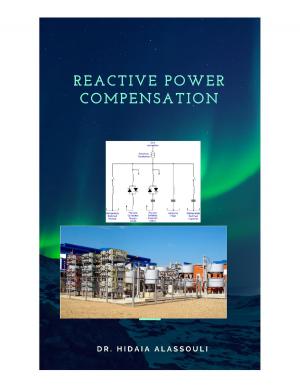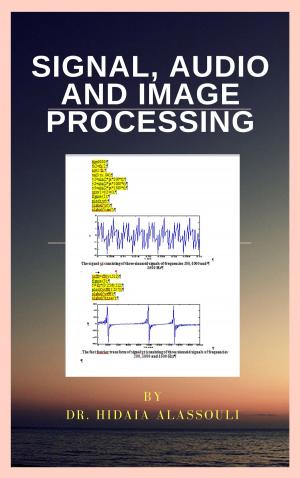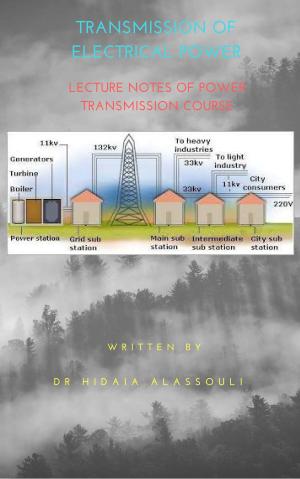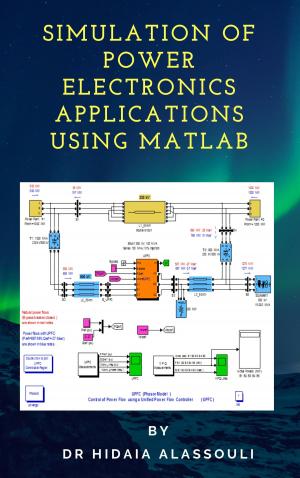| Author: | Dr. Hidaia Alassouli | ISBN: | 9780463958278 |
| Publisher: | Dr. Hidaia Alassouli | Publication: | August 20, 2018 |
| Imprint: | Smashwords Edition | Language: | English |
| Author: | Dr. Hidaia Alassouli |
| ISBN: | 9780463958278 |
| Publisher: | Dr. Hidaia Alassouli |
| Publication: | August 20, 2018 |
| Imprint: | Smashwords Edition |
| Language: | English |
Power systems have two components of apparent power: active and reactive power. Both components are necessary for functioning of electrical systems. The active power is the average power absorbed by the resistive load. The reactive power is the measure of energy exchange between the source and reactive power of load. Energy storage devices do not dissipate or supply power, but exchange power with the rest of system.
Active power is the one that is converted to other forms of energy in the load yet reactive power is only responsible for magnetizing purposes. Power factor is a ratio depicting how much of the power supplied is real. The reactive current contribute in the value of the overall magnitude of current in transmission lines causing unnecessarily high line currents and low power factor.
Since a low power factor means higher amount of apparent power need to be supplied by the utility company, thus the company must also use bigger generators, large transformers and thicker transmission/distribution lines. This requires a higher capital expenditure and operational cost which usually result in the cost being passed to the consumer.
In this research, we seek to identify the effects of a low power factor on Swaziland Electricity Company’s power supply system and recommend possible solutions to the problem. The results are useful in determining how to optimally deliver power to a load at a power factor that is reasonably close to unity, thus reducing the utility’s operational costs while increasing the quality of the service being supplied.
The book includes the following chapters:
• ABSTRACT
• CHAPTER 1: INTRODUCTION
• CHAPTER 2: LITERATURE REVIEW
• CHAPTER 3: RESEARCH METHODOLOGY
• CHAPTER 4: DATA COLLECTION
• CHAPTER 5: RESULTS AND ANALYSIS OF THE SIMULATION MODEL
• CHAPTER 6: BENEFITS OF POWER FACTOR CORRECTION
• CHAPTER 7: FINDINGS, RECOMMENDATIONS AND CONCLUSIONS
• REFERENCES
• APPENDIXES
Chapter two of this thesis discusses literature and theories behind power factor and its correction. Here we include the causes and effects of a low power factor in detail and how it is usually corrected in a power system.
In chapter three the research methodology used in the study will be described. The setting and the study design are also described. Here also the methods used to collect the data and the way the data will be analyzed are explained.
In chapter four, data on loading of five of SEC’s substations will be collected and used in calculating their power factor and the approximated size of correction equipment will be determined from the results.
Chapter five consist of the simulation model where the load behavior will be simulated and also the simulation results will be discussed here. The sixth chapter reviews the benefits of PFC and evaluates the cost and benefits associated with this project. Finally, chapter seven summarizes the research and also reveals the recommendations and conclusions made.
Power systems have two components of apparent power: active and reactive power. Both components are necessary for functioning of electrical systems. The active power is the average power absorbed by the resistive load. The reactive power is the measure of energy exchange between the source and reactive power of load. Energy storage devices do not dissipate or supply power, but exchange power with the rest of system.
Active power is the one that is converted to other forms of energy in the load yet reactive power is only responsible for magnetizing purposes. Power factor is a ratio depicting how much of the power supplied is real. The reactive current contribute in the value of the overall magnitude of current in transmission lines causing unnecessarily high line currents and low power factor.
Since a low power factor means higher amount of apparent power need to be supplied by the utility company, thus the company must also use bigger generators, large transformers and thicker transmission/distribution lines. This requires a higher capital expenditure and operational cost which usually result in the cost being passed to the consumer.
In this research, we seek to identify the effects of a low power factor on Swaziland Electricity Company’s power supply system and recommend possible solutions to the problem. The results are useful in determining how to optimally deliver power to a load at a power factor that is reasonably close to unity, thus reducing the utility’s operational costs while increasing the quality of the service being supplied.
The book includes the following chapters:
• ABSTRACT
• CHAPTER 1: INTRODUCTION
• CHAPTER 2: LITERATURE REVIEW
• CHAPTER 3: RESEARCH METHODOLOGY
• CHAPTER 4: DATA COLLECTION
• CHAPTER 5: RESULTS AND ANALYSIS OF THE SIMULATION MODEL
• CHAPTER 6: BENEFITS OF POWER FACTOR CORRECTION
• CHAPTER 7: FINDINGS, RECOMMENDATIONS AND CONCLUSIONS
• REFERENCES
• APPENDIXES
Chapter two of this thesis discusses literature and theories behind power factor and its correction. Here we include the causes and effects of a low power factor in detail and how it is usually corrected in a power system.
In chapter three the research methodology used in the study will be described. The setting and the study design are also described. Here also the methods used to collect the data and the way the data will be analyzed are explained.
In chapter four, data on loading of five of SEC’s substations will be collected and used in calculating their power factor and the approximated size of correction equipment will be determined from the results.
Chapter five consist of the simulation model where the load behavior will be simulated and also the simulation results will be discussed here. The sixth chapter reviews the benefits of PFC and evaluates the cost and benefits associated with this project. Finally, chapter seven summarizes the research and also reveals the recommendations and conclusions made.















